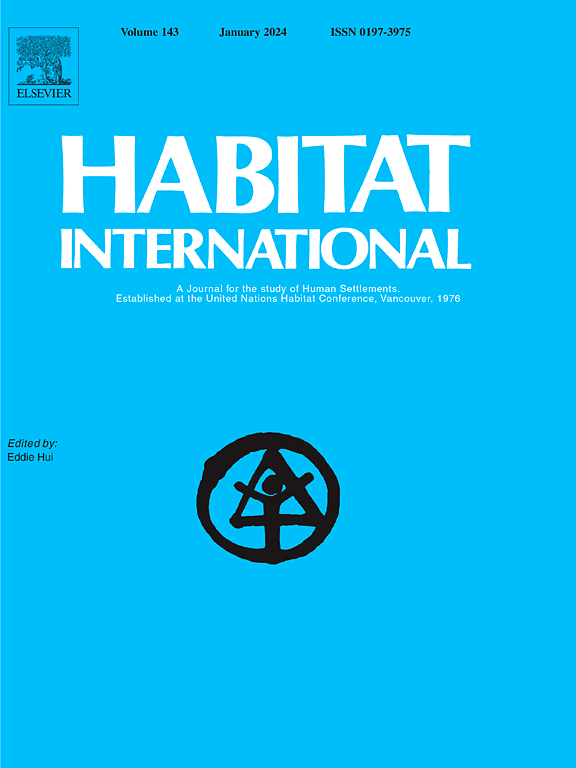Residential segregation of Chinese minority groups in Greater Sydney
IF 6.5
1区 经济学
Q1 DEVELOPMENT STUDIES
引用次数: 0
Abstract
Over the years, migration to the major cities of advanced economies has culminated in residential segregation for minority groups. These segregated communities often have differing driving forces and demographic characteristics. Greater Sydney, for instance, has been home to waves of immigrants, particularly from China, making the Chinese the third-largest immigrant group in Australia as of 2021. This resulted in the formation of Chinese enclaves in the city, but the residential segregation of the Chinese minority has not been examined in the literature. Notably, these Chinese enclaves may not align with the traditional understanding of residential segregation. To address this gap, we interviewed 61 Chinese residents living within these designated enclaves and supplemented our findings with secondary data from the Australian Bureau of Statistics. We applied content analysis and qualitative methods to identify the prominent enclaves, their determinants, and the consequences of living in these areas. The findings suggest that Chinese enclaves do not match the typical segregated areas known for their socio-economic disadvantages. Chinese migrants tend to settle in certain areas primarily due to favorable pull factors, such as access to quality education, better economic opportunities, and well-developed infrastructure. Although these areas also provide supportive environments with cultural and community benefits that facilitate the settlement and integration of Chinese migrants into Australian society, they still face unique challenges, such as potential cultural segregation and the impact on local house prices. The findings could inform settlement policies by the relevant state authorities and aid the decisions of newly arrived in Australia.
大悉尼地区华人少数群体的居住隔离
多年来,向发达经济体主要城市的移民最终导致少数族裔的居住隔离。这些隔离的社区往往有不同的驱动力和人口特征。例如,大悉尼地区一直是移民浪潮的家园,尤其是来自中国的移民,截至2021年,中国移民已成为澳大利亚第三大移民群体。这导致了城市中华人聚居区的形成,但中国少数民族的居住隔离尚未在文献中进行研究。值得注意的是,这些中国飞地可能不符合对居住隔离的传统理解。为了解决这一差距,我们采访了61名居住在这些指定飞地内的中国居民,并用澳大利亚统计局的二手数据补充了我们的发现。我们应用内容分析和定性方法来确定突出的飞地,它们的决定因素,以及生活在这些地区的后果。研究结果表明,中国的飞地与以社会经济劣势而闻名的典型隔离地区并不相符。中国移民倾向于在某些地区定居,主要是由于有利的拉动因素,如获得优质教育、更好的经济机会和发达的基础设施。尽管这些地区也提供了有利于中国移民定居和融入澳大利亚社会的文化和社区环境,但他们仍然面临着独特的挑战,例如潜在的文化隔离和对当地房价的影响。研究结果可以为有关国家当局的定居政策提供信息,并有助于新到澳大利亚的人做出决定。
本文章由计算机程序翻译,如有差异,请以英文原文为准。
求助全文
约1分钟内获得全文
求助全文
来源期刊

Habitat International
Multiple-
CiteScore
10.50
自引率
10.30%
发文量
151
审稿时长
38 days
期刊介绍:
Habitat International is dedicated to the study of urban and rural human settlements: their planning, design, production and management. Its main focus is on urbanisation in its broadest sense in the developing world. However, increasingly the interrelationships and linkages between cities and towns in the developing and developed worlds are becoming apparent and solutions to the problems that result are urgently required. The economic, social, technological and political systems of the world are intertwined and changes in one region almost always affect other regions.
 求助内容:
求助内容: 应助结果提醒方式:
应助结果提醒方式:


